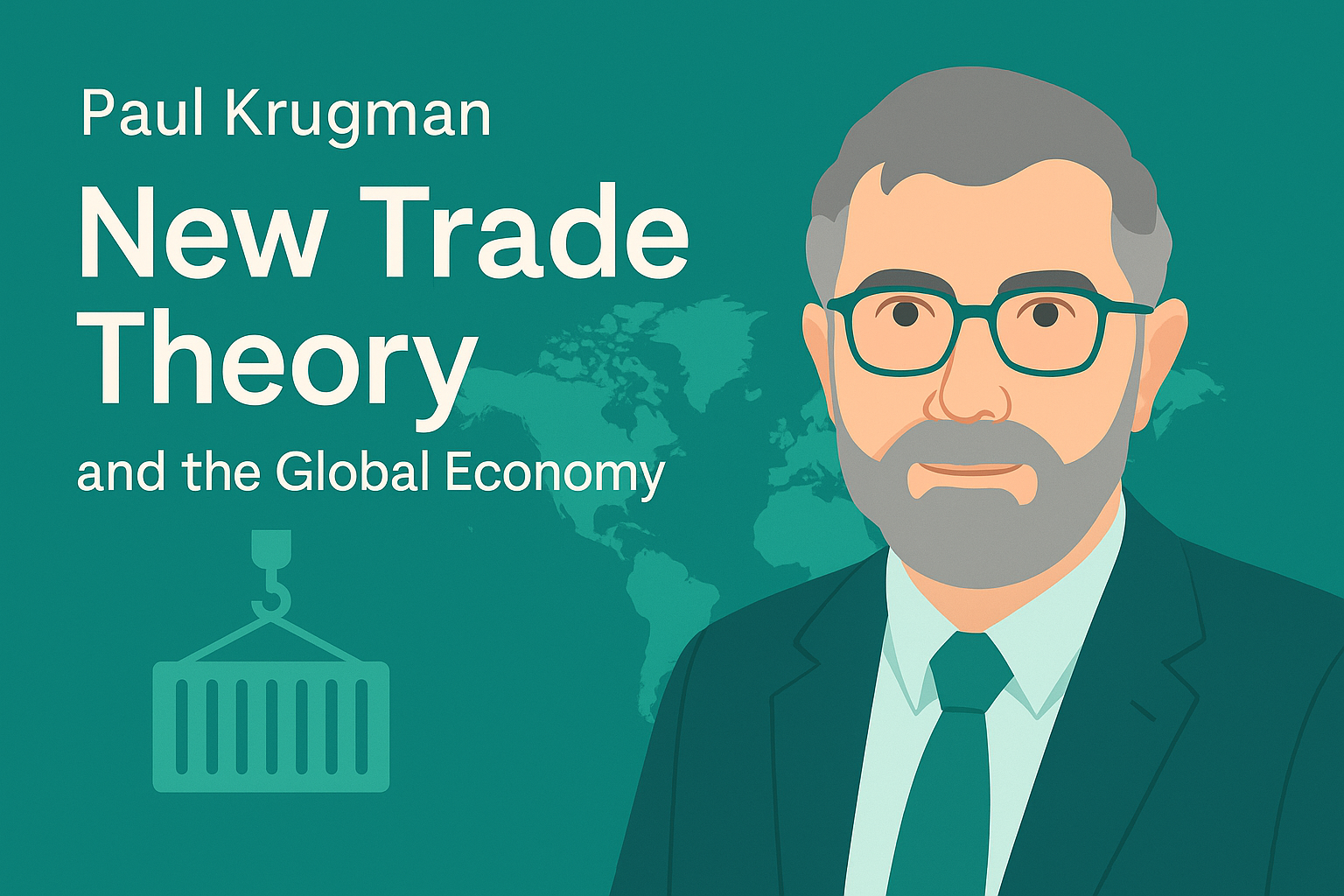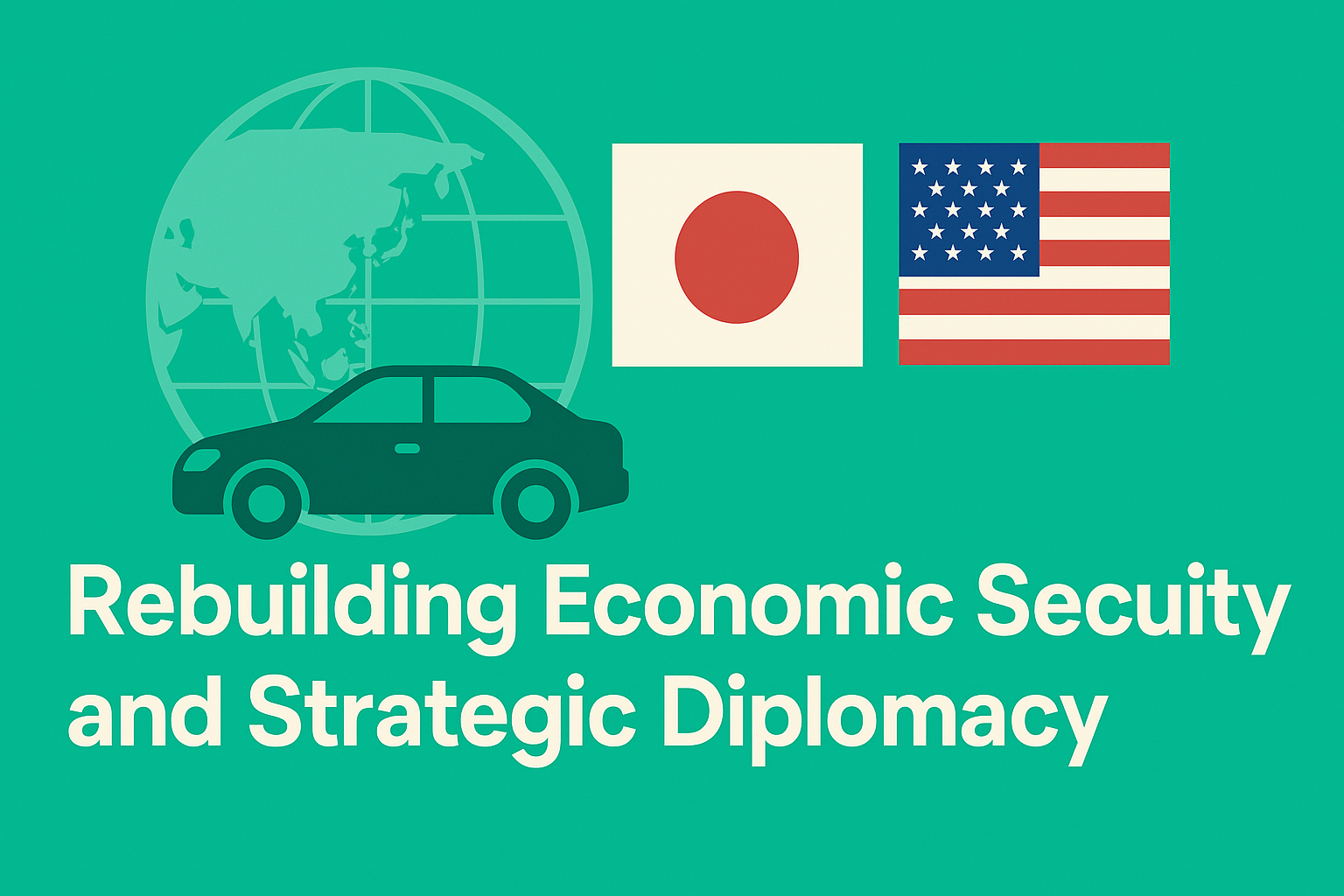Introduction: The Significance of Krugman’s Innovation
During the 1970s and 1980s, traditional trade theories—such as Ricardo’s theory of comparative advantage and the Heckscher–Ohlin model—failed to explain the growing volume of intra-industry trade among similar developed countries, particularly trade in differentiated goods.
Paul Krugman advanced international trade theory by incorporating economies of scale and product differentiation within the framework of monopolistic competition, thereby giving rise to the New Trade Theory (NTT). This paradigm opened the door to new macroeconomic insights into how trade drives productivity, growth, and spatial concentration in a globalized world.
Core Concepts of the New Trade Theory
| Concept | Description |
|---|---|
| 📈 Economies of scale | Average costs decline as production expands, making concentration and export of production efficient. |
| 🛍️ Product differentiation | Consumers value variety; trade in similar products occurs across countries. |
| 🔄 Monopolistic competition | Firms have market power due to differentiated products; contrasts with perfect competition. |
Krugman’s framework allows trade to occur even without comparative advantage, emphasizing internal economies of scale and consumer preference for variety.
Implications for International Macroeconomics
📊 Trade Structure and Economic Growth
New Trade Theory posits that access to larger markets allows firms to exploit economies of scale, thus raising productivity and long-run GDP growth.
Small open economies (e.g., Japan, Korea) rely heavily on external demand, as global markets amplify scale and specialization advantages.
Macroeconomic takeaway:
Trade is not merely an exchange of goods; it is a driver of total factor productivity (TFP) and endogenous growth.
💱 Exchange Rates and Competitiveness
In a world of product differentiation, price is only one factor of competitiveness. Quality, branding, and innovation are key.
While exchange rates still affect exports, non-price competitiveness (technology, design, services) increasingly determines trade performance.
Implication:
Currency devaluation provides limited and temporary benefits; long-term trade success hinges on innovation and uniqueness.
📦 Rethinking the Current Account
In traditional theory, current account imbalances reflect comparative advantage. But Krugman’s NTT explains how two countries can trade similar goods in both directions, depending on scale economies and consumer preference.
Example:
Germany and Japan both export automobiles to each other—not because of comparative advantage, but because of differentiated consumer preferences and branding.
Implication:
Current account positions reflect firm-level advantages, not just national factor endowments.
🌍 Economic Geography and Regional Inequality
Krugman extended NTT into New Economic Geography, explaining how economic activity clusters geographically due to:
- Transportation costs
- Labor market pooling
- Demand-side agglomeration effects
Global trade tends to reinforce core-periphery structures, benefiting industrial hubs while exacerbating regional decline elsewhere.
Macroeconomic implication:
Trade liberalization increases aggregate welfare, but worsens spatial inequality unless accompanied by redistributive policies.
Policy Applications and Trade-Offs
| Policy Area | Application | Implication of NTT |
|---|---|---|
| Trade Policy | FTAs, EPAs, TPP | Market expansion and product diversity drive growth |
| Industrial Policy | Innovation subsidies, branding support | Non-price competition becomes essential |
| Education/HR | Support for R&D and global business skills | Human capital drives differentiation |
| Regional Policy | Infrastructure and innovation in lagging regions | Counteracts agglomeration externalities |
✅ Conclusion
Paul Krugman’s New Trade Theory redefined how we understand the macroeconomic role of trade. It shifted the debate from static comparative advantage to dynamic drivers of competitiveness, such as:
- Scale efficiency
- Product variety
- Innovation ecosystems
- Spatial agglomeration
In today’s world, where trade tensions, regional disparities, and digital globalization intersect, NTT offers a robust framework for crafting integrated economic and trade policy.
Trade is no longer just about exchanging what you’re best at—it’s about shaping what you can uniquely offer to a global market.


